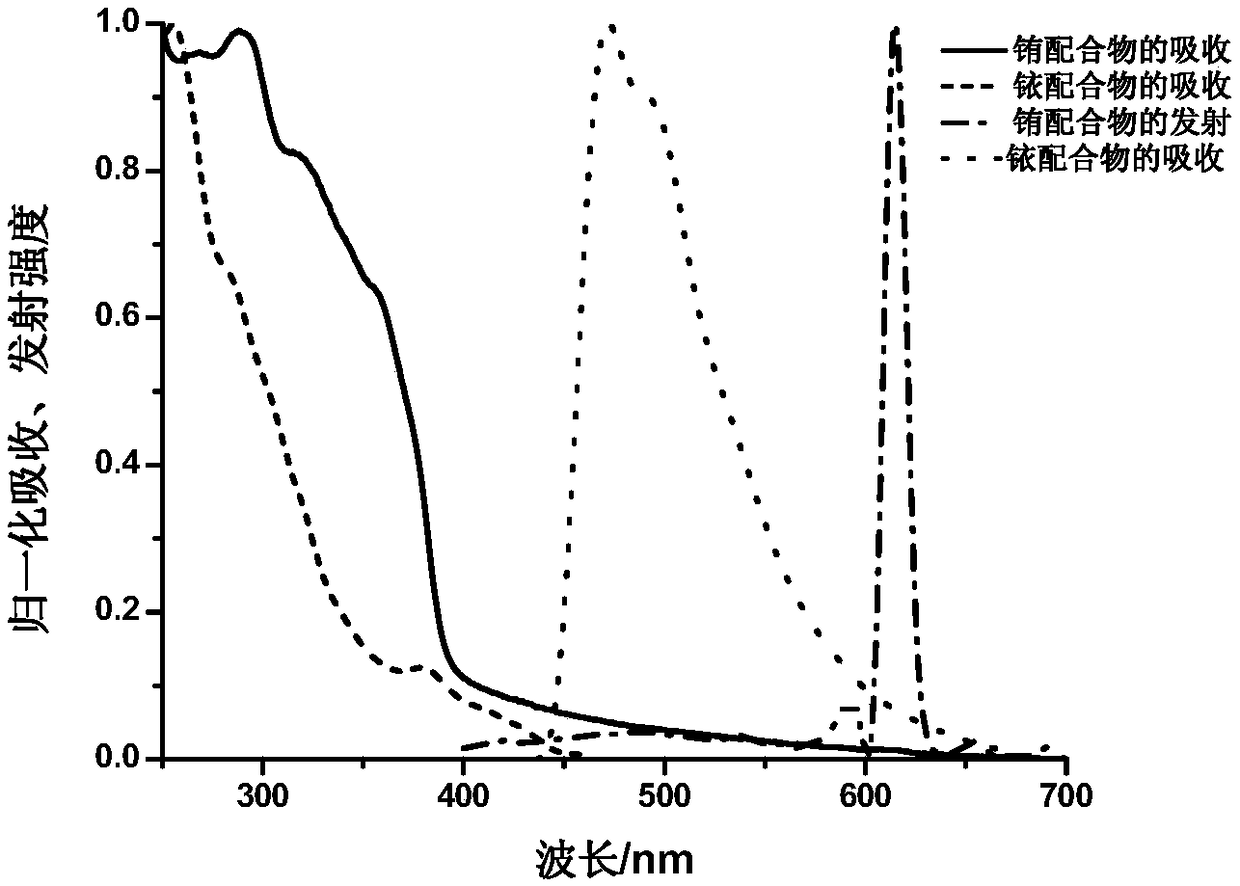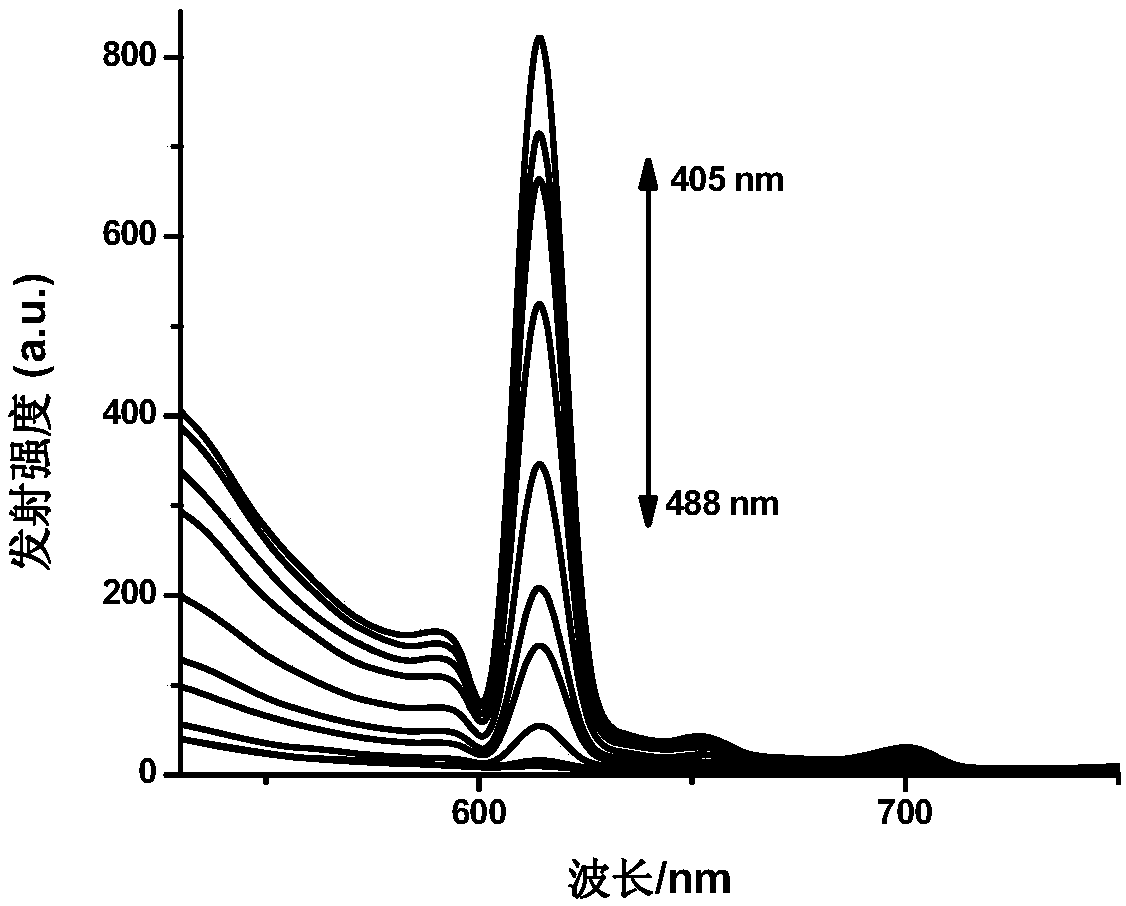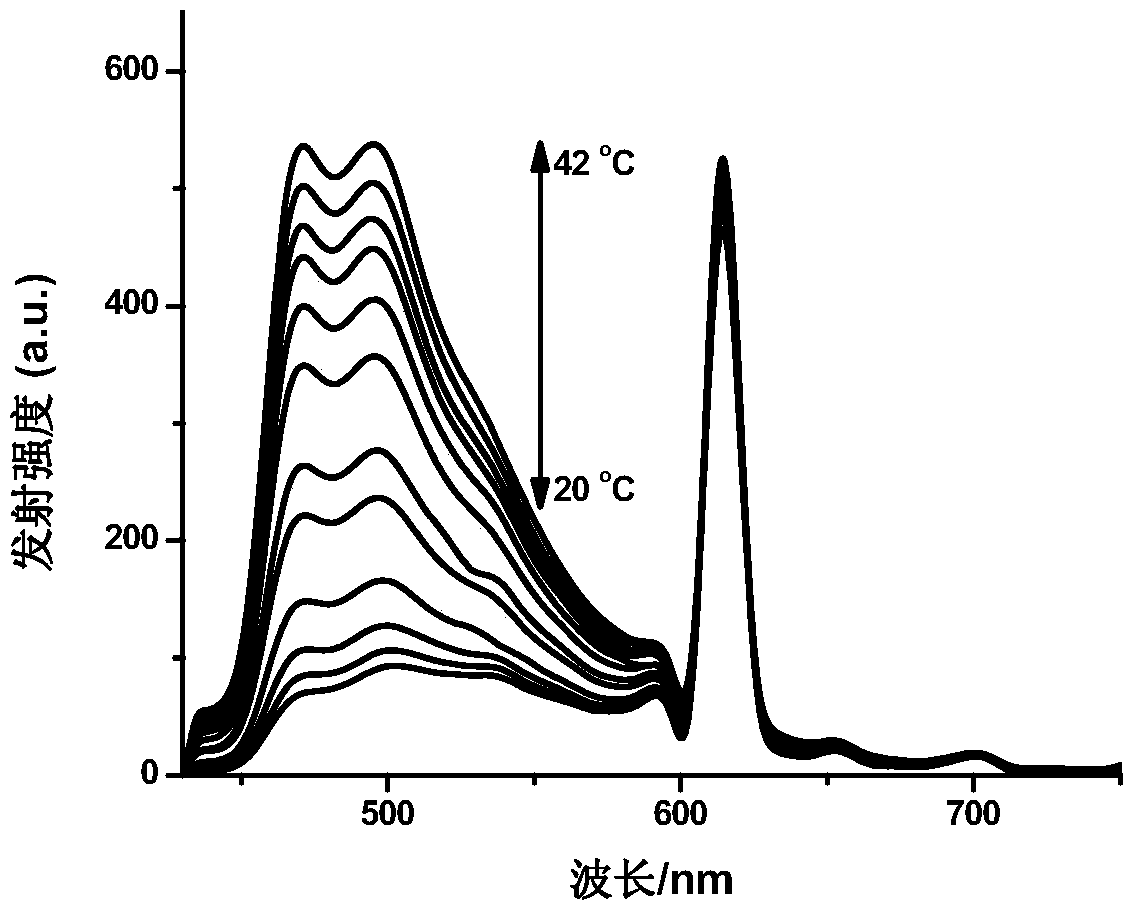A visible-light excitable ratiometric fluorescent temperature-sensitive probe based on europium complex and its preparation method and application
A europium complex, ratiometric fluorescence technology, applied in thermometers with physical/chemical changes, fluorescence/phosphorescence, indium organic compounds, etc., can solve the problems of low temperature resolution and high cytotoxicity, and achieve sensitive and good temperature response. Biocompatible, good reversible effect
- Summary
- Abstract
- Description
- Claims
- Application Information
AI Technical Summary
Problems solved by technology
Method used
Image
Examples
Embodiment 1
[0040] Example 1 Probe Synthesis
[0041] Step 1, preparation of europium complex
[0042] Compound 1: Preparation of 5-nitro-1,10-phenanthroline
[0043] Add 5.0g of 1,10-phenanthroline into a round bottom flask, add 45.0mL of concentrated sulfuric acid to dissolve it, then add 25.0mL of concentrated nitric acid dropwise, reflux at 165°C for 2h, cool to room temperature, and dissolve the reaction solution dropwise Drop into ice water. Adjust the solution to slightly acidic with 10% sodium hydroxide solution. The precipitated yellow precipitate was the product, which was filtered with suction, washed with water and dried in vacuo. Yield 5.1 g (82%) of a pale yellow solid. GC-MS (EI-m / z): 225 (M + ).
[0044]
[0045] Compound 2: Preparation of 5-amino-1,10-phenanthroline
[0046] Add 5.0g of 5-nitro-1,10-phenanthroline and 0.9g of Pd / C into a round bottom flask, blow nitrogen to remove oxygen, add 150.0mL of absolute ethanol to dissolve it, and then add N 2 h 4 ·H ...
Embodiment 2
[0071] Embodiment 2 P1 emission spectrum test
[0072] Configure the dilute solution of P1 obtained in Example 1, use water as the solvent, pipette 2.0mL of the solution into a fluorescence cuvette, and then use different excitation wavelengths for testing at 37°C, such as figure 2 As shown, the wavelengths are 405nm, 413nm, 418nm, 428nm, 438nm, 448nm, 458nm, 468nm, 478nm, 488nm. The test data shows that the iridium complex as an "antenna molecule" can extend the excitation window of europium to the visible light range of 468nm.
[0073] Emission spectrum test at different temperatures: such as image 3 As shown, the excitation wavelength is 405nm, and the test temperature range is 20-42°C, respectively 20°C, 22°C, 24°C, 26°C, 28°C, 30°C, 32°C, 34°C, 36°C, 38°C, 40°C ℃, 42 ℃, the test data show that as the temperature increases, the emission intensity of iridium gradually increases, and the emission intensity of europium does not change much.
[0074] Such as Figure 4 As ...
Embodiment 3
[0076] Example 3 Confocal imaging experiments of polymer probes detecting temperature in living cells
[0077] The cells used in this example are human cervical cancer HeLa cells, at 37°C, 5% CO 2 Continue to culture for 24 hours under the same conditions to make it adhere to the wall, add polymer probes (5μM), incubate for one hour and perform confocal experiments, and use the live cell workstation to control the temperature. Such as Image 6 As shown, the emission intensity of iridium has obvious changes at different temperatures, indicating that the probe can detect the temperature of living cells very well.
[0078] The ratiometric fluorescent temperature-sensitive probe based on the iridium complex sensitized europium complex of the present invention can realize double emission, and the ratio of the two fluorescence peaks has a linear relationship with the temperature change, such as image 3 shown. The probe has the ability to detect temperature and can realize visual...
PUM
 Login to View More
Login to View More Abstract
Description
Claims
Application Information
 Login to View More
Login to View More - Generate Ideas
- Intellectual Property
- Life Sciences
- Materials
- Tech Scout
- Unparalleled Data Quality
- Higher Quality Content
- 60% Fewer Hallucinations
Browse by: Latest US Patents, China's latest patents, Technical Efficacy Thesaurus, Application Domain, Technology Topic, Popular Technical Reports.
© 2025 PatSnap. All rights reserved.Legal|Privacy policy|Modern Slavery Act Transparency Statement|Sitemap|About US| Contact US: help@patsnap.com



